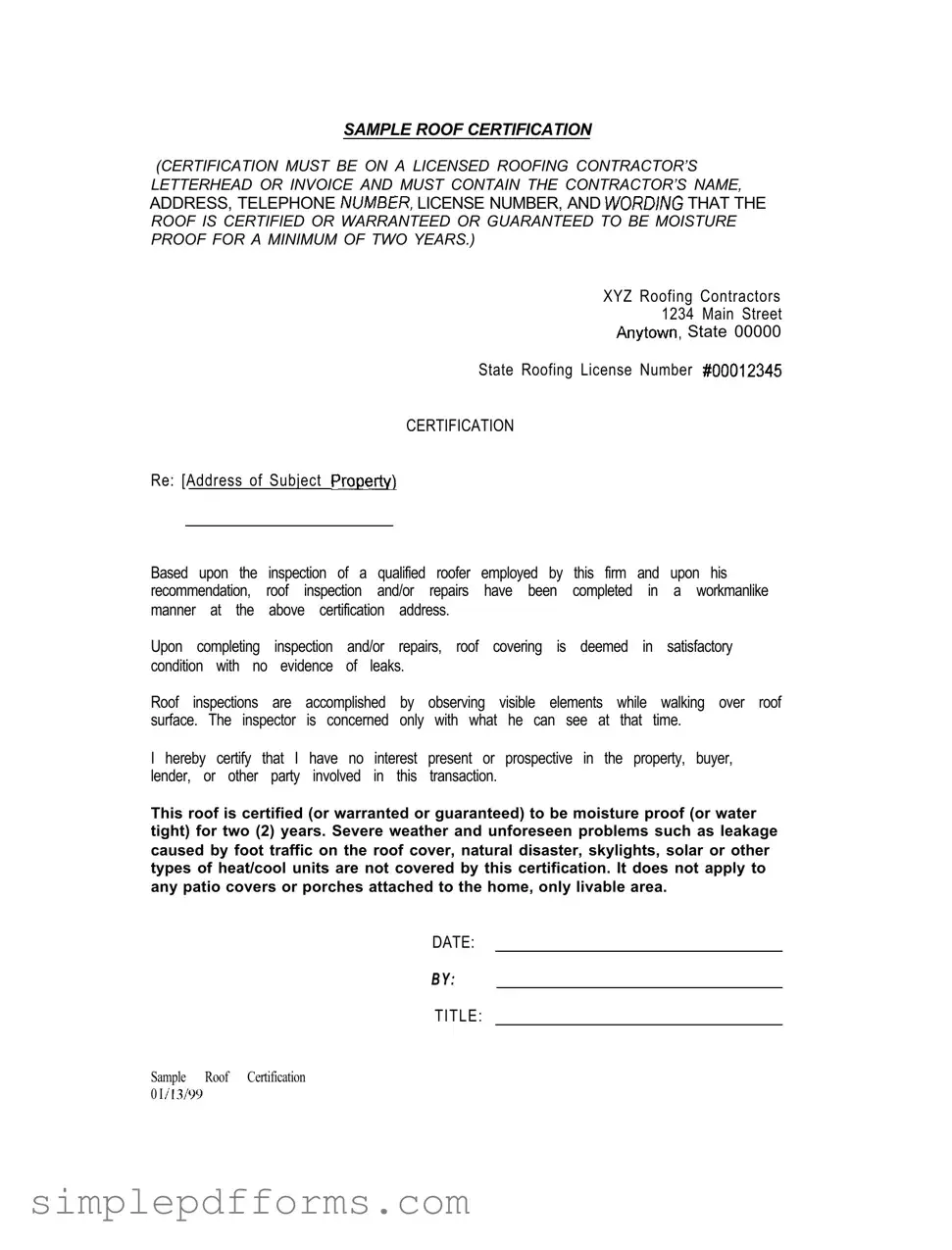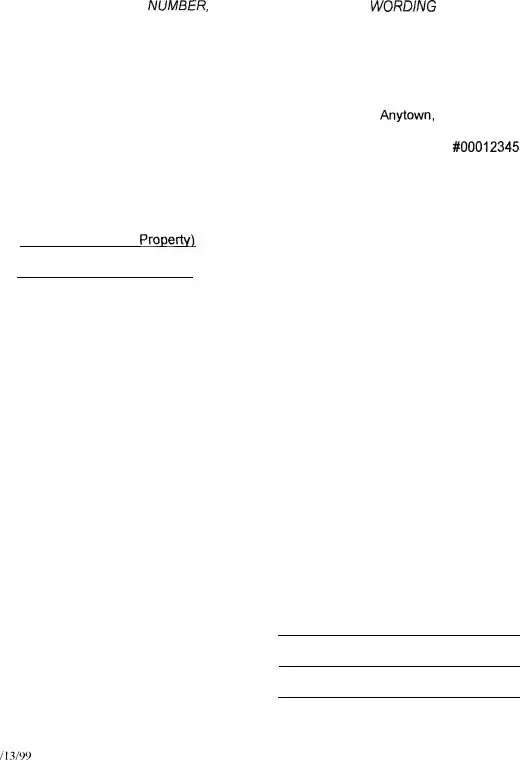Filling out the Sample Roof Certification form requires careful attention to detail. One common mistake is failing to use a licensed roofing contractor’s letterhead or invoice. Without this, the certification may not be considered valid. Always ensure that the letterhead includes the contractor’s name, address, and telephone number.
Another frequent error involves neglecting to include the contractor's license number. This number is essential for verifying the contractor's legitimacy. If this information is missing, it can lead to complications down the line, especially if issues arise with the roof.
People often forget to specify the address of the subject property. This detail is crucial, as it clearly identifies the location of the work performed. Without it, the certification may lack clarity and could create confusion for all parties involved.
Many individuals overlook the wording that states the roof is certified or warranted to be moisture-proof for a minimum of two years. This statement must be included to ensure that the certification meets the required standards. Omitting this language can render the certification ineffective.
It's important to note that the certification must accurately reflect the condition of the roof. Some individuals may exaggerate or misrepresent the state of the roof. This can lead to liability issues if problems arise later. Always report the condition truthfully based on the inspection.
Another mistake is not providing a clear date on the certification. The date is vital for establishing the timeline of the warranty. Without it, questions may arise regarding when the certification began and when it will expire.
Signatures are often overlooked. The certification must be signed by an authorized individual. If the signature is missing, it can call into question the authenticity of the document.
Some people fail to address the limitations of the certification. It is crucial to include disclaimers regarding severe weather and unforeseen problems. This protects both the contractor and the homeowner by clarifying what is and isn’t covered.
Lastly, many forget to mention that the certification does not apply to any patio covers or porches attached to the home. This distinction is important to avoid misunderstandings about the scope of the certification. Always make sure to clarify what areas are included and excluded from the warranty.

